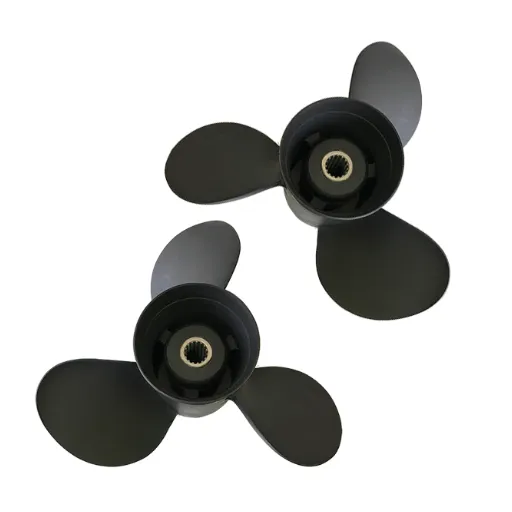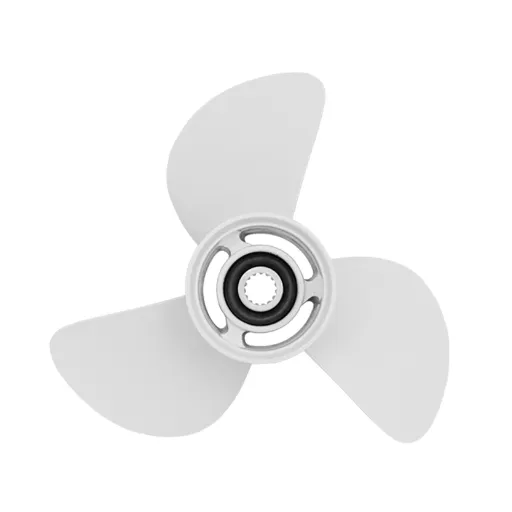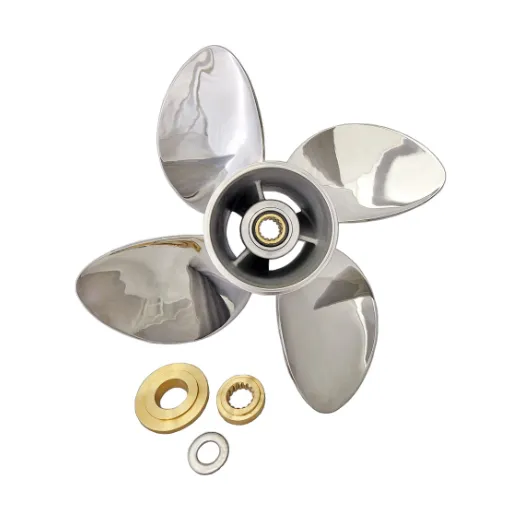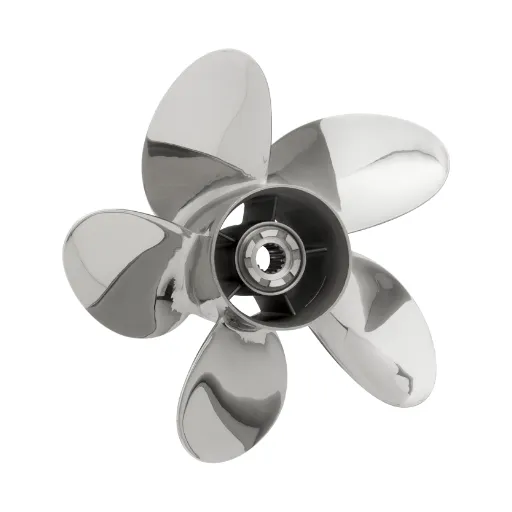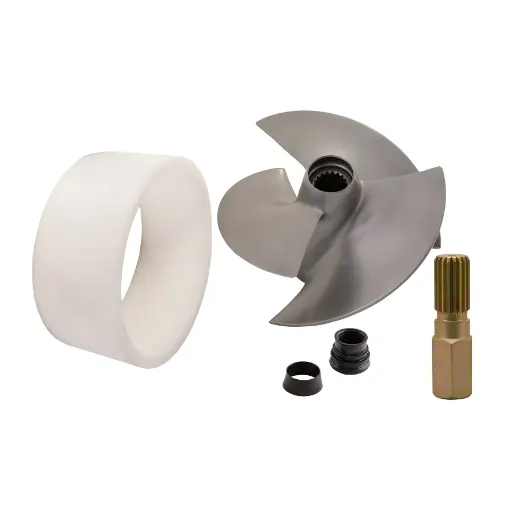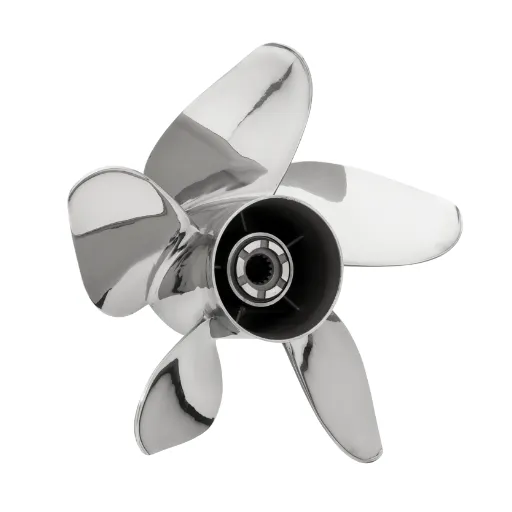The winter season is just beginning, and jet skis, perfect for adrenaline-packed summer days on the water, need to be cared for and prepared when they are unused for colder seasons. Without appropriate procedures, your jet ski could suffer damage either from freezing temperatures or lengthy periods of inactivity, which in turn would mean costly repairs and a delay in resuming its season of fun. Thus, winterizing the jet ski is more essential to keep it safe for your investment while being ready to hit the water when it’s warmer outside. And to prepare you for some ultimate fun this summer! This guide will walk you through the crucial steps in winterizing your jet ski 2025 to keep it at the peak of its condition and ensure its prolonged life. So, whether you have just bought this machine or have been riding one since birth, this guide will be of great help to you.
Preparing Your Jet Ski for Winterization
Essential Tools and Materials Needed
There are some necessary tools and materials required to properly winterize a jet ski. First, get marine-grade antifreeze. This is essential to protecting the jet ski’s internal engine components from freezing. Make sure it is non-toxic and made specifically for marine engines so it prevents freezing and corrosion. The next crucial item is a jet ski flush kit to flush out salt, sand, and other debris from the engine and cooling system.
Next is fogging oil to coat the interior engine parts and protect them against moisture and rust. A good quality fuel stabilizer is also needed to treat the gasoline remaining in the fuel tank, so that the fuel does not degrade or affect the engine during winter storage. If your jet ski requires changing oil before storage, you need to have oil and oil filters as well. Consult your manufacturer’s guidelines to be sure of getting the right oil for your jet ski.
Other materials are a high-quality jet ski cover that fits tightly to prevent dust, moisture, and debris from reaching the machine during storage. You might need cleaning materials for cleaning, such as marine soap, a soft cloth, and wax, to give the exterior a protective finish. It is highly advised to use a battery tender or trickle charger to keep the battery charged and ready for use in the spring. Having all these tools and materials on hand will assure you proper winterization and a stress-free experience when the season to ride is back around.
Common Challenges in Winterizing
Fuel Stabilization Issues: Fuel stabilization is often neglected during winterization procedures. When no stabilizer for the fuel is added, gasoline loses its validity with time, which ultimately may clog the filter and pipelines leading to corrosion and an engine reluctant to start at the beginning of the season. To circumvent this, use a good-quality fuel stabilizer and run the engine for about five minutes to ensure it coats and penetrates throughout the system.
Engine Protection Problems: The next main issue is putting the engine or other internal parts at risk, which mostly happens because some critical steps are missed, including the oil change and the antifreeze addition. Stale oil causes internal corrosion, while insufficient antifreeze may cause the pipes to freeze and get damaged during the cold months. To fix this, ensure the oil is fresh and use the proper type and amount of antifreeze in accordance with your equipment’s specifications.
Storage Complications: Finally, improper storage can become yet another issue. Allowing your vehicle or equipment loose to moisture, drastic temperature changes, or pests will only invite rust, structural damages, and other glaringly expensive repairs. To combat this, store your equipment indoors or under a weatherproof cover. Also, prepare a site, free from any possible infestations and other environmental hazards. Doing so will certainly save you a huge load of headaches when it is time to bring your vehicle or equipment back into use.
Understanding Your Jet Ski’s Components
The main parts making up a jet ski are the hull, engine, impeller, intake grate, and steering system. The hull, being the main body of the jet ski, provides buoyancy and stability on the water. They are usually made from the most tough materials such as fiberglass or plastic composites, so as to withstand all forms of water-based activities. The hull needs proper care so that it does not get damaged; regular washing is a good method.
The engine powers the jet ski and typically runs on gasoline. The engine drives the impeller, which is a spinning device that ejects water towards the back for thrust. Below the jet ski lies the intake grate, which helps direct water toward the impeller while keeping debris from entering the system. Make sure these components are free of dirt, grime, and debris for a smooth and efficient performance.
The steering system gives control over the jet ski’s direction to the rider. Contemporary jet skis have handlebars linked to cables or electronic control systems for even better maneuverability. This system changes the impeller thrust direction to wherever it wants to go. Regular checks on the system for any wear or alignment issues will keep it in good condition. If you understand and take care of these major components, your jet ski will serve you longer and safely and efficiently.
Steps to Winterize Your Jet Ski
Step 1: Draining Water from the Jet Ski
Draining the jet ski returns water-two-of-the-most-crucial steps in jet ski winterizing. Water residuals in the engine or cooling system can freeze during winter and cause cracks or serious damage to vital parts. To start, the engine is to be started with the jet ski tilted to a slight upwards position so that any remaining water in the cooling system may fully be drained out. Keep the engine running for about 20 to 30 seconds while forcing water out and try not to overheat it.
Next, check stray water found within places like an exhaust system and shake the craft or tilt it at various angles. Also, if you have a bilge pump in your jet ski, make sure that it has dried up the interior compartments from standing water. For jet skis with open cooling systems, now is a good time to flush them with antifreeze to keep them from freezing and ensure the system is protected for winter.
Dry the interior and exterior of your jet ski afterward to prevent any rust or mildew. Using a soft cloth or towel, wipe all areas of the jet ski, concentrating on spots that usually get wet, such as under the seats or inside the engine bay. Getting your jet ski entirely drained and dried out goes a long way in preventing damage from freezing and keeps it healthier for longer. Always ensure that you follow the instructions for draining and winterizing your particular jet ski model.
Step 2: Applying Fogging Oil for Engine Protection
Fogging oil is essential for preventing the engine of the jet ski from aging and losing efficiency during off-seasons or longer periods of storage. This special kind of oil clings to the inside of the engine to make sure that rust or corrosion do not take their toll due to moisture or condensation. It is always best to follow the instructions in the owner’s manual for your jet ski whenever applying fogging oil, as the method may differ from one model to another. Usually, the fogging oil is injected into the engine through the air intake ports or directly into the carburetor with the engine running so that the oil can coat all internal parts evenly.
The jet ski should be placed on a safe and level surface and started off running at an idle for a few minutes, which heats up the engine and makes the oil stick to the internal parts of the engine. Next, locate the proper entry point for the fogging oil usage, which resides in your jet ski model documentation. The engine will sputter slightly during the spraying of the fogging oil before stalling outright-which is quite normal, as it indicates the formation of the protective layer. Be careful not to over-apply the spray, as it can build up and prevent the jet ski from performing properly when used again.
Once the fogging oil is applied, look around for correct application and wipe off any excess oil that leaks out; this final step helps avoid unnecessary mess and keeps other components clean. Storing it in a cool, dry place further helps with maintaining the fogging oil’s effectiveness. By following these suggestions, one can save the internal parts of the jet ski from damage and keep it running perfectly until the season sets in. With fogging oil as part of maintenance, the life of your jet ski will be prolonged while simultaneously sparing you many costly repairs along the way.
Step 3: Running Antifreeze through the System
The use of antifreeze in your jet ski’s cooling system serves as a vitally important process to ensure its protection during the winter, especially in an area where the temperature often freezes. Check the user manual of the jet ski to know exactly which type of antifreeze and how much would be required. Usually, a non-toxic marine-grade antifreeze is suggested to avoid causing damage to the environment.
The antifreeze is allowed to run through the system when the jet ski is on a firm surface with the intake grate either fitted in a flush adapter or submerged in a container filled with antifreeze solution. The engine will start and run for a short while, allowing the antifreeze to cycle through the cooling system. This will ensure water inside is displaced and substituted by antifreeze, thus, protecting the internals from freezing and cracking in winter.
Frequentizing this step in your winterizing procedure will inhibit the damage associated with it and avoid expenses for repairs. With a little proactive maintenance, your jet ski will be good to go for years, waiting to take a spin when the weather becomes warm.
Battery Maintenance During Winter Storage
Removing the Battery Safely
Proper battery maintenance is crucial to guarantee that your jet ski stays in the best condition while going through winter storage. Before taking out the battery, make sure your jet ski is completely turned off and the key removed from the ignition switch. Start by disconnecting the negative terminal, which is black, so as to prevent accidental short circuits while handling the battery. After finishing with the negative terminal, continue with removing the positive terminal, which is red. Loosen the terminal clamps with the correct tools gently and do not use excessive force, or you may end up damaging the clamps.
Once disconnected, lift the battery firmly from its compartment avoiding any kind of tilting or spilling of residual acid, which might be present in some battery types. Place it on a stable non-conductive platform such as wooden or plastic. The person handling the battery should wear gloves and goggles for protection. Check the battery for corrosion, leaked acid, or damage; treat accordingly, like cleaning the corroded terminals with a baking soda solution or replacing the battery if it is damaged, so as to avoid problems in the near future.
After removal, store the battery in a cool, dry place away from direct sunlight. Use a battery tender or trickle charger to keep the battery charged during winter months. This prevents the battery from completely discharging as discharging leads to sulfation and shortens the battery lifetime. Taking care in this respect will keep the jet ski battery in good condition so it may charge and present power when the riding season commences. Proper care during storage will help lengthen the battery lifespan and save you from the cost of unexpected battery replacements or repairs.
Proper Battery Storage Techniques
Proper care during storage ensures your jet ski battery stays healthy during the off-season. Take out the battery from your jet ski before storage if you can, and clean the terminals so that corrosion does not set in. Use a baking soda-and-water mixture to clean off buildup gently, and never store the battery while it is wet. Store the battery somewhere cool and dry so it does not get exposed to temperature extremes, which can lead to ulterior internal damage.
Another thing to do is to buy a smart battery maintainer or a trickle charger for it. The maintainer keeps your battery at maximum optimum charge without actually overcharging it, so in case you intend on keeping the battery for extended periods, it remains usable without the risk of damage being done to it. If you choose not to use a maintainer, do check the charge levels every two or more weeks.
The above-mentioned storage techniques, coupled with these advancements in battery maintenance technologies, can greatly minimize the risk of sulfation, make charging more efficient, and prolong your battery life. By staying up to date with any new methods of battery care, you ensure your jet ski battery is at its prime in performance and longevity, thus saving you much time and money.
Maintaining Battery Health for Spring
As the onset of spring paves its way forth, ensuring the jet ski battery remains in a prime state so that you can hit the waters at once without any delay is necessary. A full charge should be given to the battery prior to reinstalling it into the jet ski to avoid underperformance due to low voltage. Look for signs of corrosion on the terminals and clean them with a baking soda and water solution with a non-metallic brush to ensure good electrical connectivity between the battery and other components. Also, check the levels of electrolyte (only for non-sealed batteries), and if it is low, top it off with distilled water.
Use modern battery testers to check the state of the battery and its ability to hold a charge. Usually, such devices measure important parameters such as voltage, internal resistance, and state of charge. Also, it might be worth consulting your manufacturer for the best charging, since over- or undercharging will degrade the life of your battery.
For longer-term trustworthiness, get a smart charger that will adjust itself to the needs of the battery and never allow any overcharging. Using all these best practices and recent tools, your jet ski battery can be more efficient and durable, making for a smooth start to your spring journey.
Securing Your Jet Ski for Long-Term Storage
Choosing the Right Storage Location
When it comes to choosing an appropriate storage site for my jet ski, my prime concern remains to keep it safe, dry, and clean. I anchor special preference in covered storages that offer protection from harsh weather conditions, like heavy rain or snow, as they might be suitable for corrosion. However, if such a storage facility is not convenient, I buy a highly waterproof cover for my jet ski to keep it safe from all moisture, dirt, and UV rays.
Another concern of mine was ventilation. Good ventilation can keep moisture accumulation at bay that contributes to mildew or mold developing within and around the jet ski. Therefore, I steer clear of any sealed environments in favor of those that allow for natural air circulation. An indoor location with good ventilation, such as a garage or storage shed, suits mine needs perfectly.
Lastly, I make sure the zone offers safety. And safety is my paramount concern, so wherever possible, I freelance my jet ski out of the view of would-be thieves. That freedom includes a bit of extra-measure happiness: something like locking it down with a trailer hitch lock. Planning the storage location carefully means I can keep my jet ski in tip-top condition and ready to hit the water when the season rolls around again.
Utilizing Storage Compartments Effectively
The correct utilization of storage compartments on a jet ski plays a much-needed role in making any trip more organized and enjoyable. Most jet skis these days feature multiple storage compartments with clearly defined purposes-from storing safety equipment to clothes or personal effects and other essentials. To better utilize these spaces, one must sort out their priorities before heading out. Handy items that are easy to carry and fit into pretty small compartments include a waterproof bag for your phone, sunscreen, and snacks. Bigger storage compartments are suited for life jackets, tow ropes, and even the most basic first aid kit, ensuring you are ready for any emergency.
An additional bit of advice for the correct use of storage compartments: do not overfill them. Though your instinct may be to carry along everything you could think of needing, this will put stress on the weight limits imposed on the storage compartments, leading to some deleterious effects on your ski’s performance and balance. For instance, if weights are placed overly at the front or at the back, it might hamper your steering ability or make you less stable on water. Keeping the weights evenly distributed will help smoothen and secure your ride no matter what you got onboard.
Storage compartments require constant upkeep to maintain their protective qualities. Older jet skis mounted on the seashore would be well familiar with the damage caused by salt and moisture. Inspect the compartments regularly, clean them out after each trip, dry them thoroughly to avoid mildew, and feed to their possible wear signs. Proper care will keep your jet ski alive longer together with its storage compartments being serviceable and reliable for years.
Covering Your Jet Ski: Best Practices
Another best way to prolong its life would be by covering your jet ski properly against external elements. A high-quality jet ski cover is an essential defense against UV rays, dirt, dust, and aggressive weather elements. UV protection is very necessary because with excessive sunlight, the look of the jet ski of yours will fade and the engine rubber or plastic will begin to deteriorate. When choosing a cover, go for one made of water-resistant, breathable, and sturdy materials. Breathable fabrics are important to let any moisture below the cover to escape, else it might result in mold, mildew, or corrosion.
Consider having the jet ski cover fitting tight to your watercraft. A snug fit will prevent debris such as sand or leaves from getting inside, while ensuring wind doesn’t lift or loosen the cover. Many manufacturers provide universal covers or custom covers, which are made for specific jet ski models. Custom covers generally carry a higher price tag but offer superior protection and a precise fit. Use straps to securely hold the cover down to prevent movement during storage or transport.
Buying a storage facility that will protect your jet ski indoors or under canopy, along with a quality cover, is worthy considering for long-term storage. If indoor storage is not available, make sure to put your jet ski on a lift or trailer, elevating it slightly so water doesn’t pool at the base. Take note to clean and dry the jet ski before putting on the cover because any water or debris trapped will cause damage over time. Ensuring these precautions will keep your jet ski ready-and-raring-to-go whenever you want it done.
Expert Tips and Insights for 2025 Models
Advancements in Jet Ski Technology
By making further improvements in power, construction, fuel efficiency, and customer experience, jet ski manufacturers continue to strive for greater heights in 2025. One of the most recognisable trends in the market has been the introduction of hybrid propulsion systems. These propulsion systems offer a blend of traditional internal combustion engines and efficient electric motors, providing an environmentally friendly solution that does not compromise on power or speed. The hybrid technology ensures minimum emissions while being a fuel saver. That in turn offers a longer duration of quiet ride and less pollution to the marine environment.
Another highlight in the 2025 models is the widespread adoption of advanced GPS and mapping systems. Unlike older jet skis, the latest models provide real-time navigation tools to riders, allowing them to easily trace new routes to follow. Several models are even equipped with high-resolution touchscreen displays that provide informative mapping information, real-time weather updates, and safety warnings to assure a smooth and safe journey. This means the industry focuses on creating intuitive, smart environments for casual riders and thrill seekers alike, willing to explore new offshore waters.
Materials and design lead to lighter jet skis, which can meet rugged conditions and ergonomic demands. Composite materials increase durability and impact resistance, thus assuring better buoyancy and speed of the craft. On top of that, manufacturers focus on manufacturability-to ?Ð adjustable handlebars and increased comfort in the seats with shock-absorbent hulls so that the experience would be positively etched in the memory of every rider. When coupled with smartphone connectivity and customizable performance modes, the 2025 models blend cutting-edge innovation with human-centered design. Riding would be so good that the jet ski crowd will remember forever.
Using Cutting-Edge Tools for Winterization
Winterizing truly helps your jet ski remain in good condition and yields top results when warm weather appears. Advanced tools and technique ensure an easy, efficient job. A big task in winterization is flushing the cooling system well to remove salt, dirt, or water that could freeze and cause damage over the winter. Best draining is achieved with a modern flushing kit designed with usability in mind, with features like precision cleansing through adjustable pressure settings and secure connections.
The next important step in winterization is to protect the engine and fuel system. The state-of-the-art fuel stabilizers and antifreeze products keep your internal jet ski components safe from corrosion and freezing for a prolonged period. To impart greater efficiency, some kits have the sensor to monitor and regulate the application of these chemicals. This ensures that jet ski owners can follow manufacturers’ recommendations more closely, thereby ensuring peak performance when the jet ski ends up back in the water.
Storage options, too, have found an innovation. Super weatherproof materials and tailor-fit designs of covers provide truly superior protection from elements like snow and moisture. Smart storage tools like humidity monitors, and dehumidifiers prevent mold and mildew buildup to keep your jet ski’s interior components nice and clean. Mobile apps are now integrated to help monitor winterization schedule, maintenance log, and environmental conditions-just to name a few-providing owners a complete end-to-end solution in managing their jet ski during the off-seasons. With such advanced tools, winterization will shift from a dreaded chore to a strategic opportunity to safeguard one’s investment in a watercraft.
Proactive Solutions from Marine Mechanics
The marine mechanic represents the first link in guaranteeing the longevity and dependability of jet skis through various forms of proactive maintenance. One of the most popular forms of maintenance would be an inspection of the engine, battery, and fuel system before storage and after for any jet ski. As a mechanic, you would detect possible problems such as corrosion, leakage, or wear and tear and deal with them before significant damage could occur. They, therefore, stress the importance of fluid replacement, such as changing the oil or flushing the cooling system, to take out any debris or contaminants that could bring issues later on.
Targeted jet ski maintenance can be undertaken through the use of diagnostic tools and advanced technology. A modern diagnostic system can be used by a mechanic to monitor performance indices, weed out errors, and check the engines’ implementation against the optimum stringent criteria. Coupled with their expertise, these tools allow them to discover subtle problems that a layman might never realize existed. As a result, they may propose upgrades or enhancements such as installing a better bilge pump system or better components that will improve the overall function and make jet ski more reliable.
It further integrates scheduling and reminder systems. Many mechanics now use mobile apps or cloud-based maintenance records to make the process easy for the owner. These systems give every service, repair, or replacement documentation so that both the owner and the mechanic can track the history of the jet ski’s health. Through these means, professional techniques combined with state-of-the-art instruments provide a complete solution for the maintenance of jet skis, thereby assuring their pristine state season after season.
References
-
Yamaha Waverunner Jet Ski Manual
This manual provides detailed instructions on winterizing Yamaha Waverunners, making it a reliable reference for specific models. -
Kawasaki Jet Mate Manual
This manual includes winterization steps for Kawasaki Jet Mate models, offering model-specific guidance. -
Kawasaki 1100 STX Jet Ski Manual
A comprehensive guide for winterizing the Kawasaki 1100 STX jet ski, including draining water and other essential steps. -
Air Combat Command Winter 2023 Maintenance Tips
While primarily focused on vehicles, this document includes general winterization tips that may also apply to jet skis. -
California Department of Boating and Waterways – Quagga and Zebra Mussels Guide
This guide discusses cleaning and winterizing boats, providing insights into maintaining jet skis during the off-season. - Click here to read more.
Frequently Asked Questions (FAQ)
Q: What are the basic steps to winterize a jet ski?
A: To winterize a jet ski, first, with the engine running, remove water from the flush outlet. Remove any air filter deposits and clean them with soap and water. Put in fuel stabilizer into a full tank of gasoline to prevent algae buildup. Spray fogging oil into the carburetor and spark plug cylinders, protecting the engine. Store your PWC in a dry place opened to prevent moisture while covered to keep critters away.
Q: How can I protect the engine of my jet ski during the winter season?
A: Protecting the engine through the winter season should be done by spraying fogging oil into the carburetor and spark plug cylinders while the engine is still idling; this keeps the lubrication of internal parts and prevents dry rot. In addition, drain all water inside, store it, and keep it in a climate-controlled environment to prevent freezing temperature damages.
Q: Should I remove the spark plugs when winterizing my jet ski?
A: It is unnecessary to remove spark plugs when winterizing your jet ski; however, it may be advantageous to do so. In such a case, lubricate the spark plug cylinders with fogging oil to protect them from rust and corrosion during storage.
Q: How does water freezing affect my jet ski?
A: Water freezing inside your jet ski engine and plumbing will cause severe damage to it. Ensure you drain water from all components thoroughly and then introduce RV antifreeze into the cooling system to guard against freezing temperatures.
Q: What about the battery during jet ski winterization?
A: It is best to disconnect the battery immediately and store it in a warm place to ensure it does not freeze. That being said, charge it periodically throughout the winter to keep it in good condition for getting back to the water next season.
Q: How can I make sure my jet ski lasts for a long time?
A: To make your jet ski last longer, maintain it regularly by winterizing annually. Dry rot and flat spots on the tire are prevented by cleaning the air filter, fogging oil lubrication, and storing the PWC is a dry place.
Q: What cleaning techniques should I apply to prepare my jet ski for winter storage?
A: Use a clean rag with mild soap and water to clean the exterior of your jet ski. These can be scrubbed with steel wool on the tougher spots, but use caution not to scratch the surface. Cleaning thoroughly will remove water stains and get your jet ski ready for winter storage.
Q: How do I prepare for the next summer of getting back on the water?
A: Prior to the summer of getting back on the water, conduct a sniff test for your jet ski. Test the battery, ensure the fuel stabilizer has done its job, look at the air filter, and make sure to flush the cooling system, checking for any critters which may have found a home during storage. This should ensure that the jet ski is ready to perform at its optimum capacity when hitting the water once again.
Ready for Spring!
By following this comprehensive winterization guide, your jet ski will be perfectly preserved and ready to deliver countless hours of excitement when the warm weather returns. Proper winterization is an investment in your jet ski’s longevity and your future enjoyment on the water.





